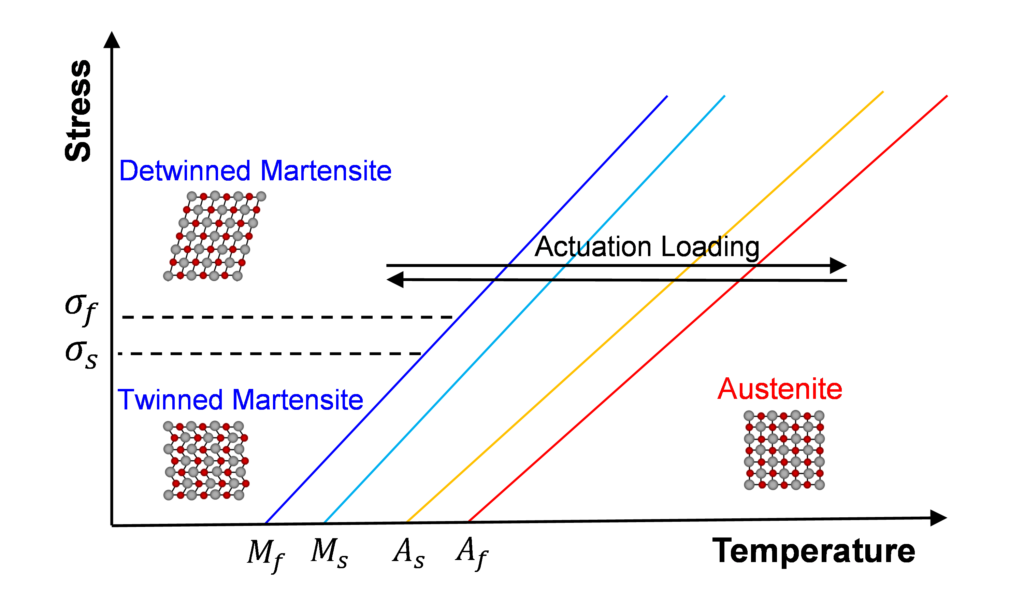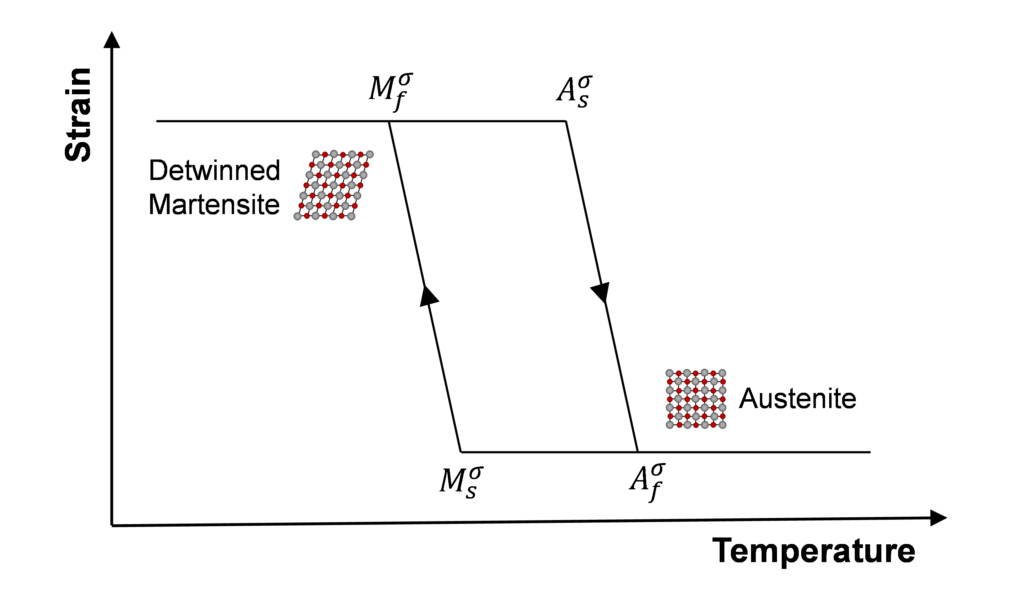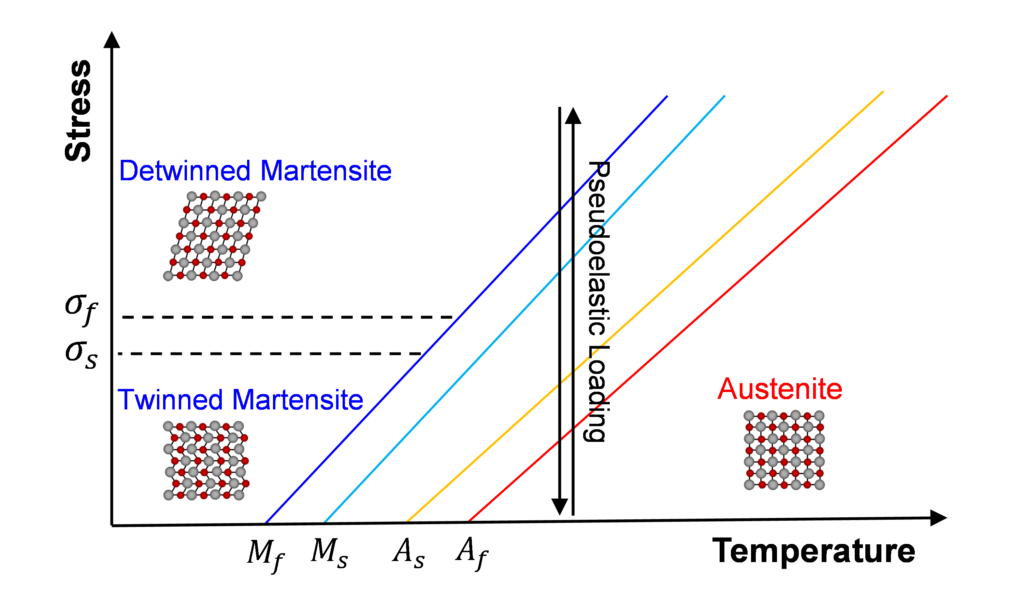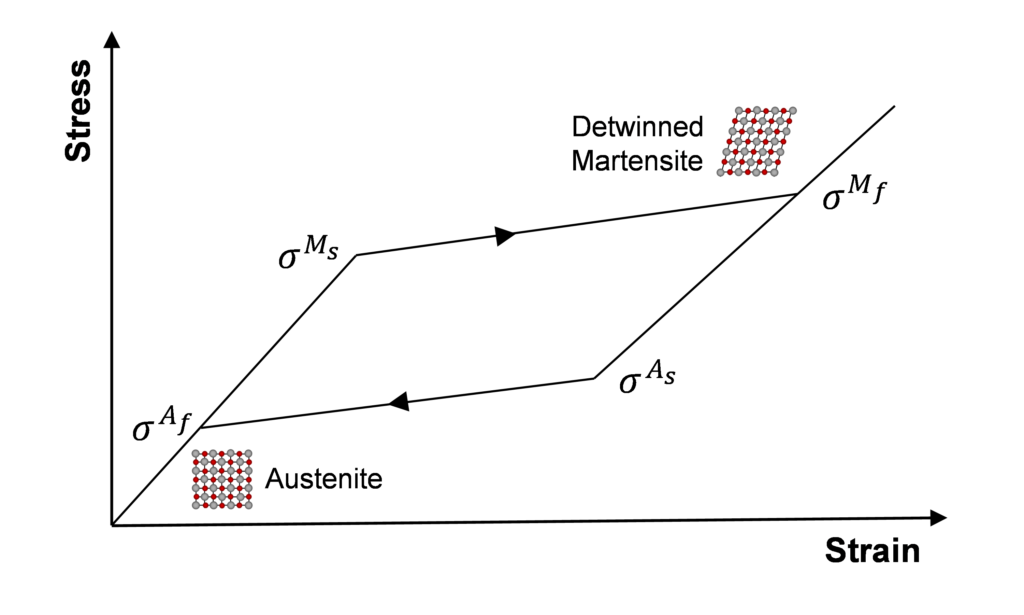Definition
Shape Memory Alloys (SMAs) are a unique class of material that can recover their original shape after being subject to seemingly permanent deformations. This is possible due to solid-state phase transformations between a high-temperature austenite phase and a low-temperature martensite phase. In addition, the martensite can be in one of two forms: twinned and detwinned. A phase transformation which occurs between these two phases upon heating/cooling is the basis for the unique properties of the SMAs. The key effects of SMAs associated with the phase transformation are pseudoelasticity and shape memory effect.
Thermal-Induced Transformation
If mechanical load is applied to the material in the state of twinned martensite (at low temperature) it is possible to detwin the martensite. Upon releasing of the load, the material remains deformed. A subsequent heating of the material to a temperature above austenite finish temperature will result in reverse phase transformation (martensite to austenite) and will lead to complete shape recovery, as shown in Figure 2. The above described process results in manifestation of the Shape Memory Effect (SME).

Figure 1. Actuation loading path

Figure 2. Strain temperature response
Stressed-Induced Transformation
It is also possible to induce a phase transformation by applying a pure mechanical load. The result of this load application is fully detwinned martensite and very large strains are observed. If the temperature of the material is above austenite finish temperature, complete shape recovery is observed upon unloading, thus, the material behavior resembles elasticity. Thus the above-described effect is known under the name of the Pseudoelastic Effect. A loading path demonstrating the pseudoelastic effect is schematically shown in Figure 3, while the resulting stress-strain diagram is shown in Figure 4.

Figure 3. Pseudoelastic loading path

Figure 4. Stress strain response
